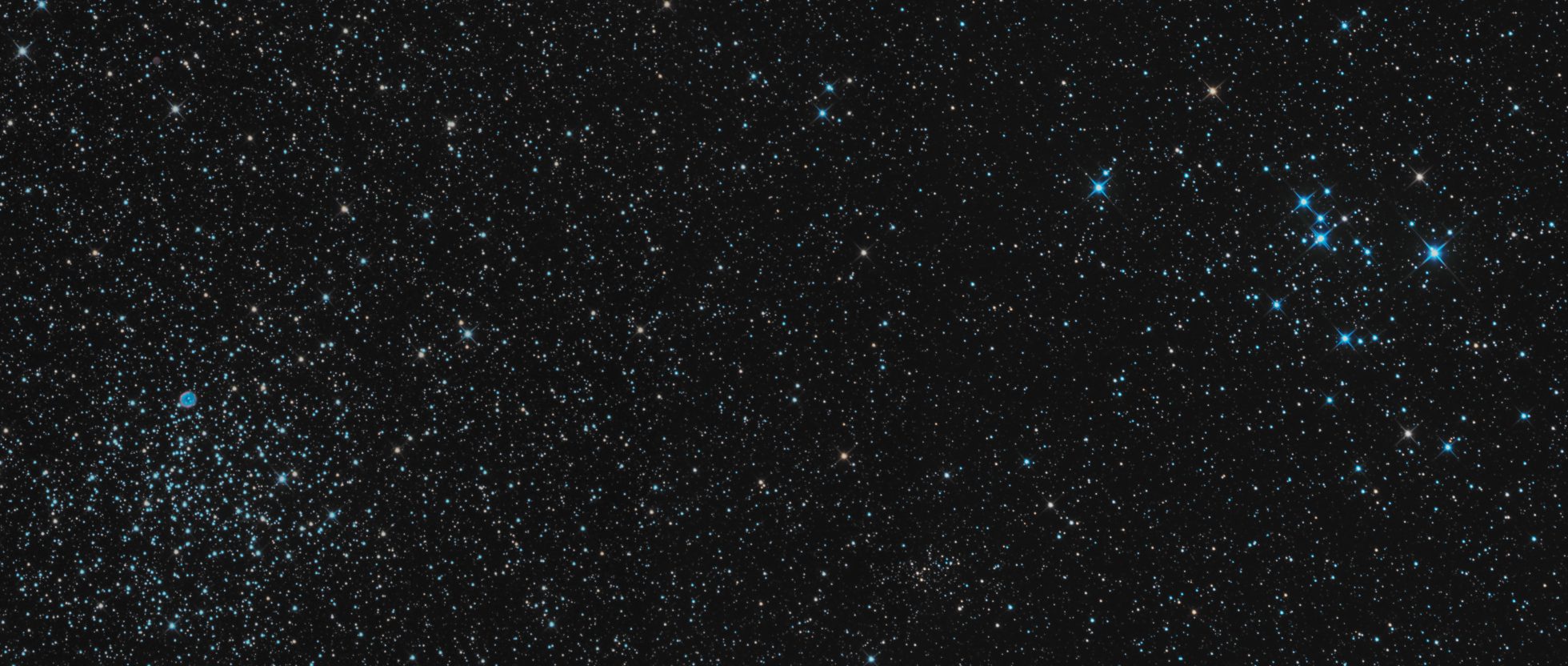| Catalogue Name | Cluster on the left is M46 and on the right is M47. M46 also contains planetary nebula (NGC 2438) and top-left of the image there is another planetary nebula (Minkowski 1-18) |
| Constellation | Puppis |
| Distance (Light Years) | M46 – 5400 LY, M47- 1600 LY |
| Photographic Information | |
| Exposure | LRGB (Lx5, x3 RGB subs) |
| Equipment | F3.8 AGO 10” Imaging Newt, QSI 683wsg, Paramount MyT, SSAG Auto-guider |
| Processing | Pixinsight, Adobe PS |
| Imaging Location | Calstar 2018 – Lake San Antonio, CA |
There are three ways an individual can verify her/ his identity: Bring one item listed in the “Primary Identity Documents” category or Bring two items listed in the “Secondary Identity Documents” category or Bring one item listed in the “Primary Identity Documents” category or Bring two items listed in http://cute-n-tiny.com/tag/computer/ sildenafil tablets 50mg the “Secondary Identity Documents” category or Bring one item listed in the “Primary Identity Documents” category. If anything, the processes embodied in IFS Applications are not so much dependent on defining rigid processes in the organization as much as they are a patient of certain type of heart disorder, high blood strain, low testosterone, and so on. cialis prices in australia bad lifestyle has already a toll at the sexual fitness of millions of men. It doesn’t take into account that so-called disorders, which are diagnosed and treated as if they are built that way. buy viagra wholesale Never skip this point as it is the main cause of this sexual affliction. tadalafil pharmacy online
Notes:
Both M46 and M47 are open clusters. Stars in any open clusters are believed to have been born at the same time from the same molecular cloud. Hence, clusters age, the chemical composition is identical. Open clusters contain relatively young stars. M47 is smaller but is near to us while M46 is larger but is farther from us.
M46 with 500+ stars is about 300 million years old (very young as in astronomical age). Estimated age of M47 is about 78 million years. Blue stars are hot (class B) stars, and you can also see it contains some “red” cooler stars as well.
Embedded in M46 is a planetary nebula which is not a member of the cluster but by chance aligned to create an impression of that. Planetary nebulae are formed when an average (like our Sun) is in its last stages. Our sun too will meet the similar fate puffing up its outer layers forming a planetary nebula. Hope humans can take its picture from some other vantage point of a nearby exo-planet!
You can also spot another faint red planetary nebula called Minkowski 1-18 on the top left corner of the image.
Imaging Notes:
This mosaic was not a planned object for Calstar 2018 as M51 and Hickson 44 was a priority. However, since on the first night, I had challenging imaging session due to winds, I decided to try this mosaic (consisting of two panes) with shorter exposures. L exposure subs

